Jewish History Books for Young Adults: The Holocaust (Page 2) |
If you wish to purchase any of these books, click on either the title or the book cover to be directed to Amazon.com. As a warning, I have put up pictures of the book covers to give you somewhat an idea of the style of each book (I know, I know. "Don't judge a book by its cover") so the pages may load slowly, depending on the speed of your internet connection.
If this page came up without frames, Click here to see the complete website
NOTE: For biographies of individuals associated with the Holocaust (Anne Frank,
Simon Wiesenthal, etc.), go to the
Biographies
For historical fiction books that take place during the Holocaust, go to the
Holocaust Historical Fiction Books Page
For Holocaust books for younger readers, go to the Children's History Page
Other Pages of Interest:
Holocaust History Books For Middle School and Young Adult Readers ...
(Page 1)
(Page 2)
(Page 3)
(Page 4)
(Page 5)
(Page 6)
Holocaust Historical Fiction Books For Middle School and Young Adult Readers ...
(Page 1)
(Page 2)
(Page 3)
(Page 4)
(Page 5)
(Page 6)
Middle School and YA Books ...
Bar Mitzvah Books |
Jewish Fiction |
Historical Fiction |
Torah Study |
Prayer and Jewish Life Books |
Jewish Holidays |
Jewish Biographies |
Jewish History Books |
Holocaust Books for Teens |
Israel Books
Jewish Historical Fiction for Middle School and YA Readers...
Biblical Era |
Middle Ages, Renaissance, and the Spanish Inquisition |
Immigration & The American Experience |
European History |
Holocaust
(Page 1)
(Page 2)
(Page 3)
(Page 4)
(Page 5)
(Page 6) |
Israel
Jewish History Books for Middle School and Young Adult Readers ...
General Jewish History & Nonfiction |
Biblical Era |
European History (Excluding the Holocaust) |
Immigration & The American Experience |
Holocaust |
Israel
Easy Reader and Picture Books ...
Jewish Children's Books (General) |
Jewish Board Books |
Biblical Stories for Children |
Jewish Holiday Books |
Jewish Family Cookbooks |
Folktales and Talmudic Stories for Children |
Jewish Life Books (Mitzvot, Keeping Kosher, etc.) |
Jewish Life Cycle Books |
Family Haggadahs |
Children's Prayerbooks |
Introductory Hebrew Books |
Jewish History and Historical Fiction Picture Books |
Israel Books
And More ...
Jewish Books for Children |
Bar Mitzvah Books |
Jewish Parenting Books |
Hanukkah Books |
Jewish Music for Children |
Jewish Videos |
Jewish Toys and Gifts |
Jewish Gift Baskets and Gourmet Food |
Jewish Jewelry |
Amazon.com Coupons, Promotions, and Sales
NOTE: For biographies of individuals associated with the Holocaust (Anne Frank,
Simon Wiesenthal, etc.), go to the
Biographies
For historical fiction books that take place during the Holocaust, go to the
Holocaust Historical Fiction Books Page
For Holocaust books for younger readers, go to the Children's History Page
Other Pages of Interest:
Holocaust History Books For Middle School and Young Adult Readers ...
(Page 1)
(Page 2)
(Page 3)
(Page 4)
(Page 5)
(Page 6)
Holocaust Historical Fiction Books For Middle School and Young Adult Readers ...
(Page 1)
(Page 2)
(Page 3)
(Page 4)
(Page 5)
(Page 6)
Middle School and YA Books ...
Bar Mitzvah Books |
Jewish Fiction |
Historical Fiction |
Torah Study |
Prayer and Jewish Life Books |
Jewish Holidays |
Jewish Biographies |
Jewish History Books |
Holocaust Books for Teens |
Israel Books
Jewish Historical Fiction for Middle School and YA Readers...
Biblical Era |
Middle Ages, Renaissance, and the Spanish Inquisition |
Immigration & The American Experience |
European History |
Holocaust
(Page 1)
(Page 2)
(Page 3)
(Page 4)
(Page 5)
(Page 6) |
Israel
Jewish History Books for Middle School and Young Adult Readers ...
General Jewish History & Nonfiction |
Biblical Era |
European History (Excluding the Holocaust) |
Immigration & The American Experience |
Holocaust |
Israel
Easy Reader and Picture Books ...
Jewish Children's Books (General) |
Jewish Board Books |
Biblical Stories for Children |
Jewish Holiday Books |
Jewish Family Cookbooks |
Folktales and Talmudic Stories for Children |
Jewish Life Books (Mitzvot, Keeping Kosher, etc.) |
Jewish Life Cycle Books |
Family Haggadahs |
Children's Prayerbooks |
Introductory Hebrew Books |
Jewish History and Historical Fiction Picture Books |
Israel Books
And More ...
Jewish Books for Children |
Bar Mitzvah Books |
Jewish Parenting Books |
Hanukkah Books |
Jewish Music for Children |
Jewish Videos |
Jewish Toys and Gifts |
Jewish Gift Baskets and Gourmet Food |
Jewish Jewelry |
Amazon.com Coupons, Promotions, and Sales
Other Pages of Interest:
Holocaust History Books For Middle School and Young Adult Readers ...
(Page 1)
(Page 2)
(Page 3)
(Page 4)
(Page 5)
(Page 6)
Holocaust Historical Fiction Books For Middle School and Young Adult Readers ...
(Page 1)
(Page 2)
(Page 3)
(Page 4)
(Page 5)
(Page 6)
Middle School and YA Books ...
Bar Mitzvah Books |
Jewish Fiction |
Historical Fiction |
Torah Study |
Prayer and Jewish Life Books |
Jewish Holidays |
Jewish Biographies |
Jewish History Books |
Holocaust Books for Teens |
Israel Books
Jewish Historical Fiction for Middle School and YA Readers...
Biblical Era |
Middle Ages, Renaissance, and the Spanish Inquisition |
Immigration & The American Experience |
European History |
Holocaust
(Page 1)
(Page 2)
(Page 3)
(Page 4)
(Page 5)
(Page 6) |
Israel
Jewish History Books for Middle School and Young Adult Readers ...
General Jewish History & Nonfiction |
Biblical Era |
European History (Excluding the Holocaust) |
Immigration & The American Experience |
Holocaust |
Israel
Easy Reader and Picture Books ...
Jewish Children's Books (General) |
Jewish Board Books |
Biblical Stories for Children |
Jewish Holiday Books |
Jewish Family Cookbooks |
Folktales and Talmudic Stories for Children |
Jewish Life Books (Mitzvot, Keeping Kosher, etc.) |
Jewish Life Cycle Books |
Family Haggadahs |
Children's Prayerbooks |
Introductory Hebrew Books |
Jewish History and Historical Fiction Picture Books |
Israel Books
And More ...
Jewish Books for Children |
Bar Mitzvah Books |
Jewish Parenting Books |
Hanukkah Books |
Jewish Music for Children |
Jewish Videos |
Jewish Toys and Gifts |
Jewish Gift Baskets and Gourmet Food |
Jewish Jewelry |
Amazon.com Coupons, Promotions, and Sales
Holocaust Historical Fiction Books For Middle School and Young Adult Readers ... (Page 1) (Page 2) (Page 3) (Page 4) (Page 5) (Page 6)
Middle School and YA Books ... Bar Mitzvah Books | Jewish Fiction | Historical Fiction | Torah Study | Prayer and Jewish Life Books | Jewish Holidays | Jewish Biographies | Jewish History Books | Holocaust Books for Teens | Israel Books
Jewish Historical Fiction for Middle School and YA Readers... Biblical Era | Middle Ages, Renaissance, and the Spanish Inquisition | Immigration & The American Experience | European History | Holocaust (Page 1) (Page 2) (Page 3) (Page 4) (Page 5) (Page 6) | Israel
Jewish History Books for Middle School and Young Adult Readers ... General Jewish History & Nonfiction | Biblical Era | European History (Excluding the Holocaust) | Immigration & The American Experience | Holocaust | Israel
Easy Reader and Picture Books ... Jewish Children's Books (General) | Jewish Board Books | Biblical Stories for Children | Jewish Holiday Books | Jewish Family Cookbooks | Folktales and Talmudic Stories for Children | Jewish Life Books (Mitzvot, Keeping Kosher, etc.) | Jewish Life Cycle Books | Family Haggadahs | Children's Prayerbooks | Introductory Hebrew Books | Jewish History and Historical Fiction Picture Books | Israel Books
And More ... Jewish Books for Children | Bar Mitzvah Books | Jewish Parenting Books | Hanukkah Books | Jewish Music for Children | Jewish Videos | Jewish Toys and Gifts | Jewish Gift Baskets and Gourmet Food | Jewish Jewelry | Amazon.com Coupons, Promotions, and Sales
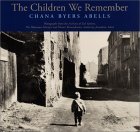 The Children We Remember: Photographs from the Archives of Yad Vashem, the Holocaust Martyrs' and Heroes' Remembrance Authority, Jerusalem, Israel By Chana Byers Abells |
Through moving photographs from the Yad Vashem Archives in Jerusalem, Israel, archivist Chana Byers Abells has created an unforgettable essay about the children who lived and died during the Holocaust. While it is a story of death and loss, it is also a story of courage and endurance, a story to be shared with today's children.
Powerful. Sobering. Harrowing. Stark. These are but some of the descriptions for the reactions evoked by this pictorial account of the Nazi era as suffered by Jewish children. Originally published by Kar-Ben, Abell's book uses a chronological organization, beginning with ```Before the Nazis . . . some children lived in towns like this,'' showing ordinary settings. Later, children are seen hungry in the streets; one is shot while being held by a woman. The pictures of happier times, the naming of specific children who died, and an economy of words increase the ghastly impact. Total despair does not reign; some children survive. Young readers will feel empoweredalmost saved through identificationby these children's strategies for rescue, hiding and escape. The book is meant to be shared with someone who can explain the images; its message is one that richly deserves a wide audience. This photographic essay, first published by Kar-Ben in 1983, written on the Holocaust is part of the movement to introduce this horrific 20th century event to young children. Made up of photographs from the archives of Yad Vashem, the Israeli Holocaust museum, the book includes pictures of prewar children attending schools and synagogues, playing with their friends, and living ordinary lives. Then the reader is able to see the influence of the Nazis and when they came how everything changed. The children had to sew yellow stars on their clothing, they weren't allowed to attend school, they didn't have enough to eat, and eventually, many of them were killed. Although the book ends with the more hopeful information that some children were rescued, the photographs remain profoundly disturbing, especially for the very young child the book seems to be addressing. (Although the recommended range is 8 to 12, the book "looks" much younger.) | ||||||||||||||||||||||
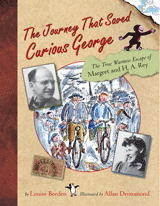 The Journey That Saved Curious George : The True Wartime Escape of Margret and H.A. Rey By Louise Borden |
Everybody loves Curious George, the mischievous monkey, but few know the harrowing story behind his creators' narrow escape from Paris just hours before the Nazis seized control of the city. In 1940, Hans and Margret Rey had to flee their home as the German army advanced. They began their journey to freedom on bicycles, pedaling to southern France with their children's book manuscripts among their few possessions. One of these manuscripts went on to become Curious George, the tale of that inquisitive monkey who is one of the most enduring characters in children's literature. The Reys' story is now told in dramatic detail in The Journey That Saved Curious George.
Louise Borden combed primary resources, including Hans Rey's pocket diaries, to tell this dramatic story. Archival materials — photographs, train ticket stubs, letters and cards — introduce readers to the world of Hans and Margret Rey, and Allan Drummond dramatically and colorfully illustrates their wartime trek to a new home. Follow the Reys' amazing story in this unique large-format book that resembles a travel journal; see for yourself the route the Reys took as they traveled to freedom. A new book, The Journey That Saved Curious George: The True Wartime Escape of Margret and H. A. Rey", tells of how George's creators, both German-born Jews, fled from Paris by bicycle in June 1940, carrying the manuscript of what would become Curious George as Nazis prepared to invade. ... Her account, intended for older children, is illustrated in whimsical European style by Allan Drummond, and includes photographs of the Reys and wartime Europe, as well as H. A. Rey's pocket diaries and transit documents. | ||||||||||||||||||||||
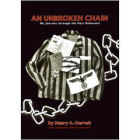 An Unbroken Chain: My Journey Through the Nazi Holocaust By Henry A. Oertelt |
In this amazing true-life account of the Holocaust, Henry Oertelt retraces the sequence of events that forever changed his destiny. Each event is broken down into eighteen separate incidents, all intrinsically linked to form the Chain of Life that kept him alive. Although often shocking, the remarkable events of Henry's life will touch the lives and hearts of readers everywhere.
The authors link together a chain of events or facts that saved Oertelt's life during the Holocaust. While in his early `20s, he and his family were sent to a succession of Nazi concentration camps. He recounts the horror of this time, the struggle to survive, and the efforts to help one another. He argues that 18 things kept him alive, 18 being the numeric value for the Hebrew word for "life." Among these links are the more commonplace, such as his good health before being incarcerated; his youth; and his profession of trained furniture maker, which occasionally helped him to secure less punishing work assignments. Others, however, are more remarkable, like the encounter with a foreman at a work site where Oertelt was working before being sent to the camps. This man, an assumed Nazi supporter, alerted the Jews on his crew to leave the site one day when the Nazis arrived, thereby giving them the chance to escape capture, if only for a little while. Written with a good deal of emotion, the book is very affecting. A solid choice for Holocaust-memoir collections. Oertelt, who lived with his older brother and widowed mother in Berlin, had just marked his twelfth birthday when Hitler came to power in January 1933. He begins with a firsthand account of Kristallnacht (November 9-10, 1938), when the Nazis destroyed Jewish property and synagogues across Germany and Austria, and he recounts the many anti-Jewish directives that followed. Oertelt divides the book into 18 "links" in the chain of events that kept him alive. They include a Nazi foreman who warned him of an impending Gestapo roundup of Jews, giving him time to flee; a 15-month confinement in Theresienstadt concentration camp, where the chance of survival was somewhat better than at Auschwitz; and the fact that he remained in relatively good health and received medical treatment from an SS general-doctor when he did become ill. The two brothers survived, but their mother and most of their relatives were murdered. This is an extraordinary memoir of one brave individual's travail during the Holocaust. | ||||||||||||||||||||||
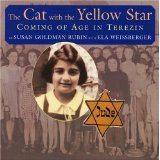 The Cat With The Yellow Star: Coming of Age in Terezin By Susan Goldman Rubin and Ela Weissberger |
Ela Stein was eleven years old in February of 1942 when she was sent to the Terezin concentration camp with other Czech Jews. By the time she was liberated in 1945, she was fifteen. Somehow during those horrendous three-and-a-half years of sickness, terror, separation from loved ones, and loss, Ela managed to grow up. Although conditions were wretched, Ela forged lifelong friendships with other girls from Room 28 of her barracks. Adults working with the children tried their best to keep up the youngest prisoners' spirits. A children's opera called Brundibar was even performed, and Ela was chosen to play the pivotal role of the cat. Yet amidst all of this, the feared transports to death camps and death itself were a part of daily life. Full of sorrow, yet persistent in its belief that humans can triumph over evil; this unusual memoir tells the story of an unimaginable coming of age.
Starred Review Rubin first met Weissberger, a Holocaust survivor, at a contemporary production of Brundibár, a children's opera most famous for having been performed by Jewish children imprisoned at Terezin. Rubin was researching Fireflies in the Dark: The Story of Friedl Dicker-Brandeis and the Children of Terezin (Holiday House, 2000) and Weissberger was there to see the opera in which she herself had acted during her internment. The Cat in the title is the part that she played, and this memoir is a result of that meeting. This finely tuned collaboration weaves together narrative and memories into one cohesive story of trauma, friendship, and survival. The clearly written text incorporates countless quotes taken from numerous personal interviews, providing readers with a true and immediate account of Ela's experiences before, during, and after the war. Extensive use of historical photographs, drawings, and primary visual sources brings even greater depth to readers' understanding of the daily life endured by Terezin's children and the importance of the relationships they formed with one another and their caregivers. Rich in detail, yet not overwhelmingly dire, this is a book about remembering, and the importance of sharing one's stories with the next generation, and the next. With sepia-tone family photographs and children's full-color artwork on every page, this poignant biography of a Holocaust survivor tells middle-grade readers what happened without concealment or exploitation. In 1942, at age 11, Ela Weissberger was transported with her Czech family to the Nazi concentration camp Terezin. She survived, and now, based on extensive personal interviews, Rubin tells Weissberger's story of being a Jewish child in that camp, including how the young prisoners rehearsed and performed the opera Brundibar. There's a hopeful message about the power of music, art, friends, and teachers, but the account never denies the fact that transports were always leaving for the death camps and some of the prisoners did not survive. The sources are part of the story, and individuals who want to learn more will welcome both the extensive notes and the lists of further resources. | ||||||||||||||||||||||
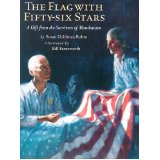 The Flag with Fifty-Six Stars: A Gift from the Survivors of Mauthausen By Susan Goldman Rubin and Bill Farnsworth |
On May 6th, 1945 when the 11th Armored Division of the U.S. Army marched into the Mauthausen Concentration camp, they were presented with an extraordinary gift. Despite their desperate and starving conditions, a group of prisoners had surreptitiously sewed scraps of sheets and jackets together to make a U.S. flag. Even though the inmates had added an extra row of stars, Colonel Richard Seibel had the flag flown over the camp as a tribute to the humanity, perseverance, and spirit of the survivors of Mauthausen. The meticulously researched paintings by Bill Farnsworth poignantly depict the events. Source notes, a biography, further resources and a reproduction of the actual flag are included.
In the spring of 1945, U.S. troops marched into the Mauthausen concentration camp in Austria to liberate surviving prisoners and were given an American flag that had been secretly made by a group of detainees there. This is an inspiring account of the camp, its survivors, and its liberators. Using scraps and whatnot found at the camp, the prisoners secretly worked to create a gift for their American heroes. A photograph shows a carefully hand-stitched and well-thought-out flag. Although it has the correct 13 stripes, the prisoners overestimated the number of stars needed. Nazi atrocities are muted here, but the sorrow, hunger, hopelessness, and, finally, optimism shine through in the pictures and in the text. Large type is set in boxes on softly hued backgrounds. Full-page illustrations intensify the text, and an afterword explains that it is unknown exactly who made the flag. This heartening, unique volume makes a fine introduction to the Holocaust for students just beginning to learn about the evils of the era. The impressive bibliography includes books, videos, interviews, letters, and Internet sites. | ||||||||||||||||||||||
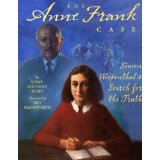 The Anne Frank Case: Simon Wiesenthal's Search for the Truth By Susan Goldman Rubin and Bill Farnsworth |
Determined to find definitive proof that Anne Frank's diary was authentic, Simon Wiesenthal began a five-year-long search for the Gestapo officer who arrested the Frank family. This inspiring and suspenseful account testifies to the difference that one person's dedication can make.
Starred Review Despite the title and the glowing front- and back-cover portraits of Anne Frank, she is just the hook to draw readers into this picture-book biography of a famous Holocaust survivor. Even those who have heard of Wiesenthal will be thrilled by this account of his miraculous escape story and then his lifetime goal to bring Nazi war criminals to justice and to create a historical record of Nazi crimes. In the opening spread, a crowd of Austrian neo-Nazi kids in 1958, supported by their parents and teachers, deny that the Holocaust existed and break up a theater performance of Anne Frank’s Diary of a Young Girl. The episode sets Wiesenthal on the hunt to prove the truth and find the Gestapo officer who arrested Anne. Then Rubin tells Wiesenthal’s personal Holocaust experiences of hiding under floorboards; being saved three times, at the very last minute, from firing squads; and surviving the camps. Farnsworth’s stirring full-page oil paintings are filled with emotion, from the close-up portraits of those who do not survive to the depiction of Wiesenthal’s reunion with his wife. Extensive back matter includes detailed source notes, a long biography of Wiesenthal, a bibliography, and a glossary. In 1958, Holocaust deniers disrupted a theater performance of The Diary of Anne Frank. In response, the well-known Nazi hunter Simon Wiesenthal vowed to prove Anne's story true by finding the Gestapo officer who'd arrested her and her family. Much detective work led to the 1963 discovery of the man in question. This "hook" is the framing story for a picture-book biography chronicling Wiesenthal's experiences during World War II and illustrating the development of his unusual career. The book is meticulously researched and packed with dates, facts, and quotes from the subject and others. Back matter includes an overview of Wiesenthal's life. The amount of detail, while admirably scholarly, makes the text rather dense and dry, and casual readers will find it slowgoing. Farnsworth's dark, realistic paintings are quietly dignified. The scenes have a cinematic drama in their use of lighting and in the contrasts between long shots and close-ups. This book is highly recommended for Holocaust collections, but it will be best appreciated by sophisticated readers or those with an already strong interest in the subject.
|
 The Irena Sendler and the Children of the Warsaw Ghetto By Susan Goldman Rubin and Bill Farnsworth
Irena Sendler was a diminutive Polish social worker who helped spirit more than four hundred children out of the Warsaw Ghetto during World War II. Using toolboxes, ambulances, and other ingenious measures, Irena Sendler defied the Nazis and risked her own life by saving and then hiding Jewish children. Her secret list of the children s real identities was kept safe, buried in two jars under a tree in war-torn Warsaw. An inspiring story of courage and compassion, this biography includes a list of resources, source notes, and an index.
|
|
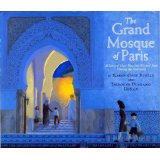 The Grand Mosque of Paris: A Story of How Muslims Rescued Jews During the Holocaust By Karen Gray Ruelle and Deborah Durland Desaix
When the Nazis occupied Paris, no Jew was safe from arrest and deportation. Few Parisians were willing to risk their own lives to help. Yet during that perilous time, many Jews found refuge in an unlikely place--the sprawling complex of the Grand Mosque of Paris. Not just a place of worship but a community center, this hive of activity was an ideal temporary hiding place for escaped prisoners of war and Jews of all ages, especially children. Beautifully illustrated and thoroughly researched.
| The book begins with a quote found in Islamic and Jewish traditions: “Save one life, and it is as if you’ve saved all of humanity.” Today’s problems between these two Abrahamic religions are obvious, but there are moments of brotherhood. During the Nazi occupation of France, Jews were being rounded up and sent to concentration camps. One avenue of refuge was the Grand Mosque in Paris, where Jewish adults and children hid, some briefly until they could be spirited away, others for longer stays. Thanks to the mosque’s rector, and particularly Berbers from Algeria, many lives were saved. This is a fascinating, little-known piece of history (the afterword explains how difficult it was to research). The authors sometimes try too hard to explain too much to a middle-grade audience, but they effectively capture the desperation felt by the victims and the enormous effort made by the resistance. The evocative paintings in somber colors heighten the tension, but some, like the one of a Jewish girl in front of an intricately designed mosque wall, capture the hope.
|
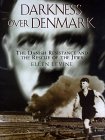 Darkness over Denmark : The Danish Resistance and the Rescue of the Jews
History comes alive in this moving story of the heroic Danes who defied the
Nazis during the occupation of Denmark. Levine (A Fence Away From Freedom)
weaves a historical narrative into the real-life experiences of 21 Danes who
were young in 1940. She puts the account of a very small country that managed
to save nearly all of its Jewish citizens from German concentration camps in
context by asking how this could have happened. Citing Edmund Burke -- The
one condition necessary for the triumph of evil is that good men do nothing -- Levine
makes her point that the Danish people refused to do exactly that. Beginning
with the Nazi invasion of Denmark on April 9, 1940, Levine depicts the Nazi
occupation from 1940-43. Then she takes the reader back in time to understand
the migration of the Jewish people to Denmark; the freedom of religion they
enjoyed there; and the history of ghettoization and anti-Semitism in other
countries. She picks up the story again to describe the resistance movement
and the events leading up to the hiding and ferrying of Jews out of the country
to Sweden. The photographs, from the dramatic cover to the portraits of the
interviewees, are dramatic and effective. Source notes, biographical sketches
of the people interviewed, a chronology, and an author's explanation of her
research technique are both interesting and useful as research tools. A
fascinating blend of historical background and the impact of events on real people.
|
|
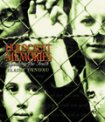 Holocaust Memories: Speaking the Truth By Elaine Landau
Landau tells the stories of eight survivors (and of a rabbi committed to keeping the memories of Holocaust victims alive). She quotes extensively from their own accounts of Kristallnacht, the Warsaw Ghetto rebellion against the Nazi army, the Nazi medical mutilations of Jews, and the Allied liberation of the death camps. She also movingly relates the experiences of a rabbi participant in the March of the Living program, which brings Jewish high school students from all over the world together in order to walk the routes from Auschwitz to the Birkenau gas chambers. The easy-to-read, very revealing, and unsparingly honest text is accompanied by black-and-white maps and some remarkable photos depicting the horrors of the Nazi genocide. The memories represented in this small book clearly "speak the truth."
| Part of the In Their Own Voices series, this is a good introduction for readers who know little of Holocaust history. The immediate personal accounts are arranged more or less chronologically, and Landau weaves in background, explanation, and connections, including black-and-white photographs, individual and historical. In the first account, a woman remembers the rise of anti-Semitism in Germany and the horror of Kristallnacht. There are concentration camp descriptions of the selections, the brutality, the liberation. In a final stark chapter, Landau shows and tells a personal story of the silence of survivors and their families long after the war. She discovered, just a year ago, what her Russian Jewish father had never been able to talk about--that his family had been killed in the Holocaust--and she realizes that somehow she has always known. Use this to talk to students about what it was like when racism was the law and some people were considered less than human. Nine elderly Jews, survivors of Hitler's "final solution," talk about their lives in the late 1930s and early 1940s as Europe became a war zone. History comes chillingly alive when children and teenagers slip across the ghettos to take refuge in a convent, or ride in an unheated cattle car for days, headed for an unknown destination. Parents are shot as their children watch. A town's Jews are locked in the synagogue, which is then set on fire. Men are forced to dig a ditch, and then they are lined up facing it and are shot in the backs of their heads. Even after the war, "liberation" did not mean that everything went back to the way it had been. Poles who had moved into the Jews' deserted homes refused to give them back. Some Poles, Germans, Russians, and Lithuanians taunted the Jews—"You should have died, Hitler had the right idea," or "I know nothing about your silver, jewels, china, books." Most of the nine immigrated to Brazil, the U.S., Canada and Israel. Young people need to learn about the Holocaust, and here is a wonderful way to be taught. The book is not for very young children, though, and parents should read it before handing it to anyone under eleven. It is not the way to introduce this subject. Parents and teachers should know their children's sensitivity level, and choose their time and method of introducing this most important history lesson about anti-Semitism, survival and human nature. This book is a part of the "In Their Own Voices" series. Highly recommended.
|
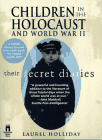 Children in the Holocaust and World War II : Their Secret Diaries By Laurel Holliday
Marking the fiftieth anniversary of the end of World War II, this is an
extraordinary, unprecedented anthology of diaries written by children
all across Nazi-occupied Europe and in England. Twenty-three young
people, ages ten through eighteen, recount in vivid detail the horrors
they lived through, day after day. As powerful as
The
Diary of Anne Frank and Zlata's Diary, here are children's experiences - all
written with an unguarded eloquence that belies their years. The diarists
include a Hungarian girl, selected by Mengele to be put in a line of prisoners
who were tortured and murdered; a Danish Christian boy executed by the
Nazis for his partisan work; and a twelve-year-old Dutch boy who lived
through the Blitzkrieg in Rotterdam. In the Janowska death camp,
eleven-year-old Pole Janina Heshele so inspired her fellow prisoners
with the power of her poetry that they found a way to save her from the
Nazi ovens. Mary Berg was imprisoned at sixteen in the Warsaw ghetto
even though her mother was American and Christian. She left an eyewitness
record of ghetto atrocities, a diary she was able to smuggle out of captivity.
Moshe Flinker, a sixteen-year-old Netherlander, was betrayed by an
informer who led the Gestapo to his family's door; Moshe and his parents
died in Auschwitz in 1944. They come from Czechoslovakia, Austria,
Israel, Poland, Holland, Belgium, Hungary, Lithuania, Russia, England,
and Denmark. They write in spare, searing prose of life in ghettos and
concentration camps, of bombings and Blitzkriegs, of fear and courage,
tragedy and transcendence. Their voices and their vision ennoble us all.
| Diary entries written by young people in ghettos, concentration camps, cities, and a Copenhagen prison camp offer insightful comments and glimpses of life during World War II. Each selection is introduced by a brief biography that includes the author's name, country, age, family circumstances before and during the war, and concludes with circumstances of death or postwar life. Nine girls and 14 boys, Jews and gentiles, aged 10 to 18, are featured. Teens should be interested in reading about the sexploits of Joan Wyndham, a 16-year-old London resident; her suburban neighbor, Colin Perry, 18, and his detailed recording of air raids; resistance fighter Hannah Senesh, 17; and Danish spy Kim Malthe-Brun, 18. A good selection for YAs interested in the experiences of their agemates from other times, the Holocaust, life during war, or those in need of a collective biography
|
 Upon the Head of the Goat : A Childhood in Hungary, 1939-1944
Nine-year-old Piri describes the bewilderment of being a Jewish child during
the 1939-1944 German occupation of her hometown (then in Hungary and
now in the Ukraine) and relates the ordeal of trying to survive in the ghetto.
| Newbery Honor Book
|
 Grace in the Wilderness: After the Liberation, 1945-1948
Siegal takes up where she left off in Upon
the Head of the Goat, the Newbery Honor book that etched on readers'
minds the fate of Hungarian Jews under the Nazis. Now Hitler's thugs have fled
Bergen-Belsen in 1945, leaving Piri Davidowitz, her sister Iboya and the other
prisoners to be freed by the British army. Piri is starving and critically ill, sent to
a hospital to recover and, after a long time, released to go with Iboya to Sweden.
The girls find work and Piri believes she has found a home with gentle people
she calls Mamma and Papa. She falls in love, too, and it's hard for her to decide,
finally, to sail with Iboya to a new life in the U.S. The book ends aboard ship
where Piri and a young man, Fritz, are conversing. He exonerates all the Germans,
blaming only Hitler (``with his sick brain'') of complicity in the murders of 11 million
people. It's stunning to compare Fritz's posture to the British liberators' outrage
and grief at witnessing the conditions in the camp, the dead and dying victims of
the glorious Third Reich.
| Neither the writing nor the subject make this easy reading for young adults, but the impact is undeniable. Children's literature includes some moving accounts of the Holocaust, but few are specific to the teen-age years. What Aranka Siegal describes . . . are, in effect, the feelings Anne Frank never lived to enter in her diary.
|
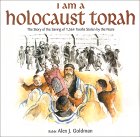 I Am a Holocaust Torah : The Story of the Saving of 1,564 Torahs Stolen by the Nazis By Alex J. Goldman
I Am a Holocaust Torah is the historic and dramatic story
of the 1,564 Torahs through the mind, heart, and words of the Torah.
| The story of I Am a Holocaust Torah began in Czechoslovakia during WWII. The Nazis stormed into the country destroying lives, property, and Synagogues. The Nazis stole Torah scrolls and Torah adornments such as crowns, breastplates, and mantles and stored them in Prague. By 1944, 1,564 Torahs and many adornments had beed gathered, and by the end of the War the Torahs were nearly forgotten. Twenty years later, in 1964, an English art dealer negotiated with the Czech authorities to transfer the Torahs to London. The Torahs were all brought to Westminster Synagogue where they were inspected, distributed, or housed. More than one thousand Torahs have found homes throughout the world. Those that remain are part of a permanent exhibit at the Czech Memorial Scrolls Center in Kent House of Westminster Synagogue, London.
|
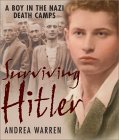 Surviving Hitler : A Boy in the Nazi Death Camps By Andrea Warren
Simply told, Warren's powerful story blends the personal testimony of Holocaust survivor Jack Mandelbaum with the history of his time, documented by stirring photos from the archives of the U.S. Holocaust Memorial Museum. Mandelbaum was 12 when the Nazis came to Poland in 1939. At first the thought of war was "thrilling." Then he saw his prosperous, happy home torn apart, and he spent three years as a teenager in the death camps in Germany, where he survived by a combination of courage, friendship, and luck. Warren, who never knew any Jews when she was growing up in a small Nebraska town, brings both passion and the distance of the outsider to the story. True to Mandelbaum's youthful viewpoint, she lets the story unfold slowly so readers don't know until the end what happened to Jack's mother and brother after they were separated, or whether his friends survived. The combination of Mandelbaum's experience and Warren's reporting of the whole picture makes this an excellent introduction for readers who don't know much about the history.
|
|
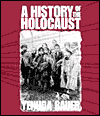 History of the Holocaust (Revised Edition) By Yehuda Bauer
Eminent scholar Yehuda Bauer traces the Holocaust to its deepest roots by examining the history of the Jews' interaction with other cultures throughout history, a detailed portrait of the Jewish presence in Eastern Europe in the early 20th century, and an exhaustive depiction of the events before and during World War II. Professor Bauer's text is considered a masterly and authoritative work.
| The revised edition contains new all new art--maps, charts, tables, graphs. All art elements and text contain updated, more accurate statistics. The book has a new design, bigger trim. It's easier to read and navigate. Lastly, there are two 8-page (16 pp. total) inserts of black-and-white photographs. This photographic element wasn't included in the first edition.
|
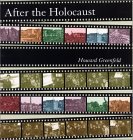 After the Holocaust By Howard Greenfeld
| Awards:
With excerpts from personal interviews and more than sixty-five of the survivors' own black-and-white photographs as well as archival pictures, Howard Greenfeld's landmark book presents an important chapter in history: the story of young men and women after the Holocaust.Ann, George, Civia, Alicia, Akiva, Judith, Larry, and Tonia. In many ways, these young people are just like all of us. But their stories are extraordinary, because they lived through one of the unspeakable tragedies in human history -- the Holocaust of World War II.On May 8, 1945, when the Allies announced the unconditional surrender of Germany, the war in Europe was over. But the stories of these eight young survivors were far from over. Often adrift and alone, they found themselves fighting to survive in a world that didn't always want them and didn't know where they belonged.In their own words, these Holocaust survivors describe their journeys after liberation, from hiding places and concentration camps through displaced persons camps, illicit border crossings, emigration, and beyond.
Striking cover art and abundant photographs will help attract readers to this grim and not wholly successful work. Greenfeld (The Hidden Children) contends that little attention has been paid to the vast difficulties facing young Jewish survivors of the Holocaust. To fill that stated void, he focuses on eight adults, mostly from Eastern Europe but all currently living in the U.S., who relate their postwar experiences in their own words. Their stories prove gripping and the author effectively demonstrates the complexity of postwar conditions. However, the premise is not entirely accurate: many Holocaust memoirs lengthily and sensitively discuss how survivors overcame extreme obstacles, from anti-Semitism in their native lands to hardships in displaced-persons camps to domestic upheavals in partially reunited families. (The books of Aranka Siegal, Anita Lobel, Ruth Minsky Sender, Johanna Reiss and Rene Roth-Hano, among others, come to mind; but the bibliography here refers readers instead to general nonfiction mostly written for adults.) Greenfeld also breaks up his interviewees' narratives, presenting segments from each person's experience in four sections (e.g., "Liberation," "After the Liberation: The Search"); the structure makes it difficult to keep all eight individuals straight and also creates or allows for gaps (Why does a Zionist group prevent a Jewish mother, also a survivor, from taking custody of her 12-year-old daughter?). While this work falls short of the overview it seems to promise, it provides fresh awareness of the Holocaust and the war. Eight Jewish survivors (five women, three men) share their personal experiences of what happened after the defeat of Hitler. Each of the oral histories is delivered in three parts, under separate sections in the book: "Liberation," "After the Liberation," and "The DP Camps." (The time spent in the displaced persons facilities, organized by the Allies and often housed in former concentration camps and Nazi bunkers, provided the victims with shelter and allowed them to begin to piece together their lives and come to terms with what they had been through.) The organization of this title differs from many related books such as Elaine Landau's Holocaust Memories in that all of these different and very affecting stories are offered in chronological segments. While this places readers in the position of having to keep everyone straight, it also facilitates the comparing and contrasting of the various speakers' experiences. Greenfeld provides extensive amounts of historical information (some featured in sidebars) that support these first-person oral testimonies and puts them into the context of youth being released from years of imprisonment into an uncertain future. What the future held (immigration to the U.S. in all these cases) is briefly but neatly wrapped up in the afterword, completing this important and relevant piece of history. Captioned black-and-white archival photos are found throughout. Greenfeld's The Hidden Children is a classic account of the children who survived in hiding from the Nazis in Europe. This book uses a similar approach to tell the story of what happened to young Holocaust survivors after the war. Greenfeld weaves the personal stories (based on his interviews with eight Jewish survivors now living in the U.S.) with his own commentary and a general history of the time. The readable, slightly oversize design features lots of black-and-white photographs, news photos, and family snapshots that capture what was lost. Occasional sidebars fill in the history, including one on U.S. immigration quotas in 1945 that denied entry to refugees. The truth of the individual voices gives the history immediacy. Many Jews faced anti-Semitism after the war, but what was it like for a teen to return home and knock on the door, only to be chased away by people who had grabbed the place when the young person's family was sent to the camps? What did young orphans do in the displaced-persons' camps, waiting for months for a country to take them in? Greenfeld has deliberately chosen a wide range of survivors who were young at the time of liberation, from several different countries and with a variety of war experiences. Several nearly died in the camps, a few had been in safe hiding places. Some were hungry for education after the war; some were wild for a good time. Some want to forget; some cannot. There's no sentimentality; one survivor is still haunted by the horrific revenge some ex-prisoners took on their guards. Greenfeld quotes Gabrielle Schiff, who talks about what she witnessed as a social worker in the DP camps: "At the risk of destroying a well-known cliche, I affirm that suffering does not make people any better; it often brings out the worst in them." There is no better book to answer the Holocaust deniers. As Greenfield writes, the post-Holocaust experiences are actually a continuation of the Holocaust itself, not a postscript. |